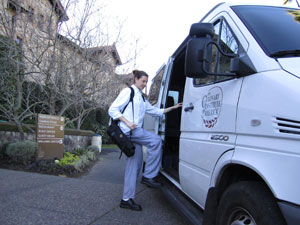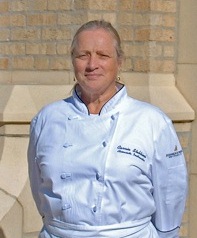Green Tomato: Biodiesel Is a Natural Solution at the CIA at Greystone
Saturday, 03 November 2012 21:40
 Produced for only $0.88 a gallon to operate the college’s vehicles, the savings from converting cooking oil to fuel rather than purchasing regular diesel is huge.
Produced for only $0.88 a gallon to operate the college’s vehicles, the savings from converting cooking oil to fuel rather than purchasing regular diesel is huge.
The delicious smell of hot, freshly made doughnuts and French fries is wafting through the air at The Culinary Institute of America at Greystone in Napa Valley, and it has nothing to do with the creations from the college’s culinary students. It’s the smell of cooking oil turned into biodiesel fuel being used in campus vehicles.
The biodiesel fuel is created on campus from used cooking oil gathered from the fryers in the college’s teaching kitchen and Wine Spectator Greystone Restaurant. About 50 gallons of cooking oil is transformed into 45 gallons of fuel by putting the oil into the CIA’s biodiesel distiller. This machine removes the fatty acids from the oil and cleans out impurities. The oil is then heated to a high temperature to remove any remaining water in the mixture.

 According to the author of a new book, Demystifying Food from Farm to Fork, the benefits of organic foods are not justified by their cost.
According to the author of a new book, Demystifying Food from Farm to Fork, the benefits of organic foods are not justified by their cost. Demonstrating the importance of adding a little acidity to the final flavor of a dish is especially important when developing low-sodium recipes.
Demonstrating the importance of adding a little acidity to the final flavor of a dish is especially important when developing low-sodium recipes. Just as Americans’ love affair with beef reignited in the 1990s, butter is coming back in a big way
Just as Americans’ love affair with beef reignited in the 1990s, butter is coming back in a big way